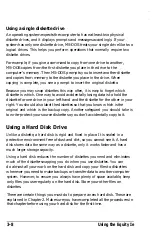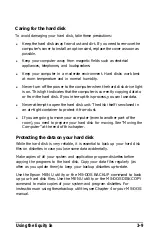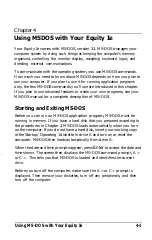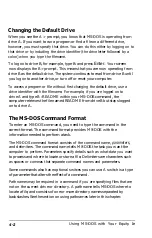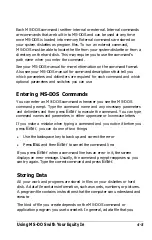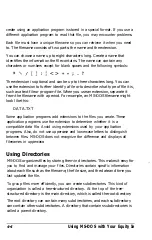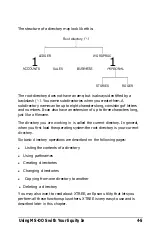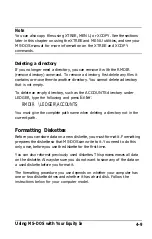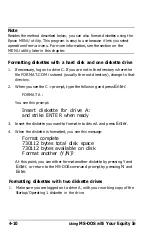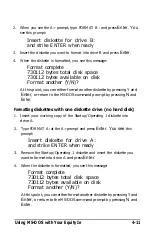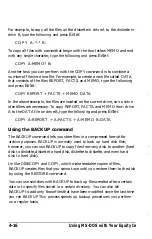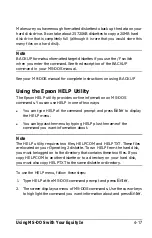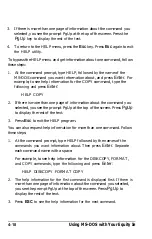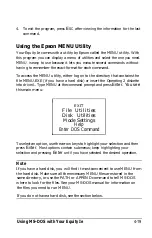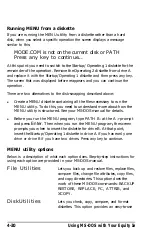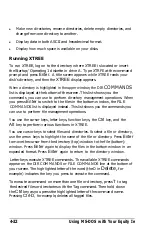
Note
MS-DOS contains some commands that make using pathnames easier. The
APPEND command lets you set a search path for data files and executable
files. The PATH command lets you specify a search path for commands and
program files so you don’t have to type a full path name every time you want
to call up an application program or an MS-DOS command. The SUBST
command lets you substitute a drive letter for a directory path, which is
helpful when you use a long path. See your MS-DOS manual for more
information on these commands.
Creating directories
The MKDIR command lets you create directories. To create a LEDGER
directory under your root directory, for example, you would type the
following and press
Enter:
MK DIR\LEDGER
You can abbreviate the name of this command to MD. For example, to
create a SALES directory under the LEDGER directory, you would type the
following and press
Enter:
MD \LEDGER\SALES
To check that the LEDGER directory is in the root directory, type DIR and
press
Enter.
(You must be in the root directory; if necessary, see the next
section for instructions on changing directories.) The screen displays a list of
files in the root directory and the new subdirectory, LEDGER < DIR > .
The < DIR > after the name identifies it as a subdirectory of the current
directory.
Storing files in separate directories is almost the same as storing them on
separate disks. You must either specify the path name or change directories to
access files in different directories-just as you must specify the drive or log
onto a different drive to access files on different disks.
Using MS-DOS with
Your
Equity Ie
4-7
Summary of Contents for Equity Ie
Page 1: ...EQLJITYIe User s Guide EPSON ...
Page 2: ...EPSON EGlLJITYIe User s Guide Q50188015 1 ...
Page 5: ...iv ...
Page 47: ...3 12 Using the Equity Ie ...
Page 73: ...4 26 Using MS DOS with Your Equity Ie ...
Page 147: ...EQLJITYIe m la r ...




